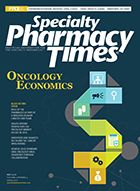Publication
Article
Specialty Pharmacy Times
Should Manufacturers Contract for Oncology Drug Program Coverage?
Author(s):
Although nearly every state has some type of rule governing coverage of oncology drugs, the question that continually pops up is whether these rules matter when it comes to formulary inclusion.
The overall effect of ongoing discussions surrounding state-mandated oncology drug coverage raises questions. Although nearly every state has some type of rule governing coverage of oncology drugs, the question that continually pops up is whether these rules matter when it comes to formulary inclusion.
To get another opinion on this important question, I spoke with a friend who has a background in a fee-for-service Medicaid program that had a goal of coverage with cost controls; however, he now does contract work for a state agency. He had an interesting point of view regarding the impact of coverage mandates: Just because you have to cover it does not mean you can’t put in barriers to payment. Mind you that his agency purchases drugs and does not perform a function similar to that of a pharmacy benefit manager (PBM). I asked why he felt this way, and he answered honestly that it’s all about the money and the high cost of new drugs. Why should an insurer pay for expensive new drugs when something less expensive might work? This is interesting, mostly because he next pointed out that it matters not whether this philosophy is good for the patient but whether it’s good for the insurer. Although this view may seem cynical, it may be more accurate than we want to admit.
This raises another important question: Should therapeutic advances and improved patient outcomes have a greater impact than simple cost factors on the development of formularies and program policies? Although many attempts have been made to address this issue, it still appears that because PBM contracts are often applied across multiple states, the impact of state-based coverage rules is limited. This is because these mandates are designed only to ensure program coverage, not to restrict the ability of insurers to have guidelines.
Therefore, as science has evolved along with our understanding of the various forms of cancer, so, too, has drug therapy, with many new oral agents now available to treat these patients. However, we are still left with many insurers that prefer using older, less expensive medications, which leads to still more questions about how quality-of-life concerns, drug efficacy, and cost considerations are factored when determining program coverage rules.
For manufacturers, the available tools that affect access are the initial price of the drug and the willingness to provide rebates to insurers. A basic problem that arises is that even if a manufacturer were to offer a lower initial price, payers would still ask for a rebate. The current market appears to be tied to the rebate concept, which leaves manufacturers with limited options beyond negotiating with insurers for program positioning.
In a previous role working for a state Medicaid agency, we were once asked to develop alternatives to save money in the drug program. One option we suggested was a mandatory 10% rebate on oncology drugs, which we felt would be dismissed without even a discussion. Instead, a state legislature told us it was great idea and asked whether we could do more than 10%. I bring this up to demonstrate the current value system.
Another significant issue is the scope of insurance laws versus pharmacy benefit rebate contracts. These rebate contracts can span multiple states, whereas single-state insurance laws pertain only to coverage decisions within that state. Therefore, a manufacturer really has few alternatives other than to discuss some form of contract arrangement with PBMs so that patients can access their products. Even with federal programs such as Medicare, the rules favor the contracting entity that controls patient access to therapy. Patients and physicians eventually make decisions based on program coverage and cost. Meanwhile, there may be therapeutic alternatives better suited to treating these patients. Under the current health care model, are there incentives in providing higher quality care versus lowering the cost of care?
The current model allows for annual selection of coverage, which in essence means an insurer that does not spend in the current coverage year may see lower costs. Conversely, if the insurer does cover a therapy, it may not benefit from the success the therapy has in lowering long-term costs. Given these factors, it appears that state-mandated drug coverage laws have a limited impact on patient access, which leaves contract negotiations as the apparent key to formulary positioning under the current health care model.
As a popular saying goes, “When somebody says it’s not about the money, it’s about the money.” 







